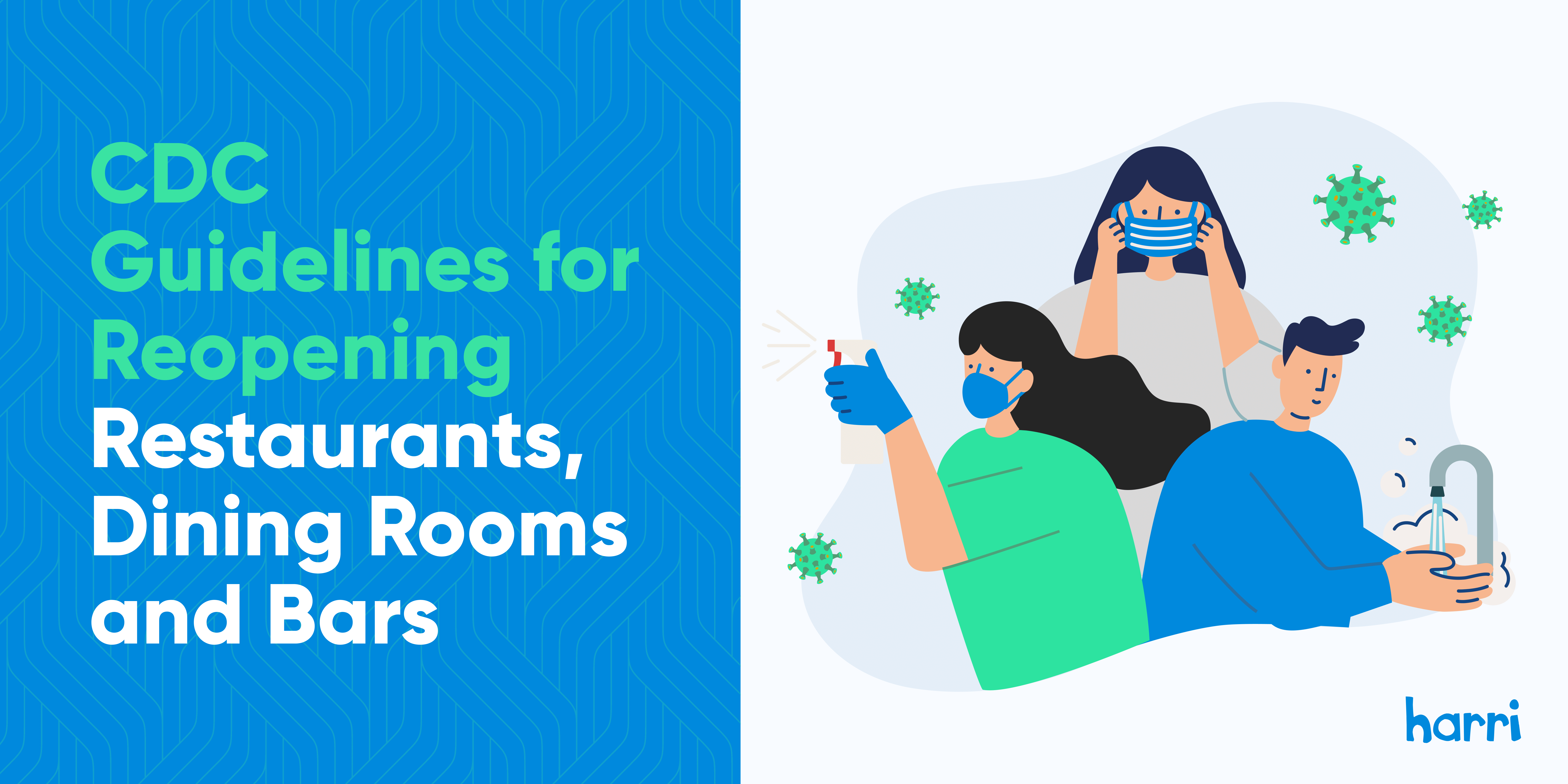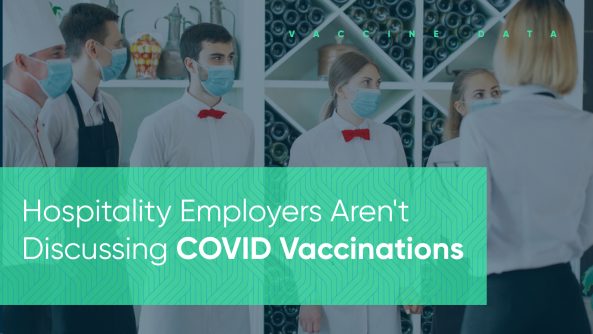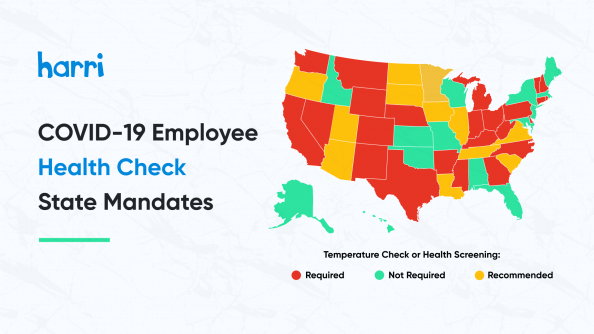CDC Guidelines For Reopening Restaurants, Dining Rooms, and Bars

- By Harri Insider Team | December 10, 2020
The National Restaurant Association recently responded to a Stanford University study that called restaurants ‘superspreaders’ sites, claiming the study is flawed. “The Association faulted the research for being based on modeling and not on real-world contact tracing, among a number of other issues.”
The NRA explained, “Researchers tracked the movements of 98 million Americans in 10 of the country’s largest cities to create predictive modeling of infection risk based on where people went, how long they stayed and how crowded those places were. Using modeling, rather than actual contact tracing, is not definitive enough to point the finger at restaurants as a major source of coronavirus spread.”
The Association believes that the Stanford research study did not consider the numerous safety protocols that restaurants follow including outdoor dining, limited indoor capacity, mask-wearing, disinfecting, air-flow upgrades, and social distancing between tables. Moreover, they also said that the studies’ sample size of 10 cities does not represent the whole country and the study did not differentiate between the different types of restaurants there are.
They also added that the study took place between March and May, where a majority of dine-in options were suspended across the country which means they were likely gathering their data from people picking up their takeout orders and not from people eating at the restaurants.
They concluded that “absent contact tracing and public health data determining who among the groups actually contract the virus and without a higher level of specificity to where they contracted it, using a modeling exercise with anonymized location data pulled from mobile devices is not an acceptable way to determine that restaurants are a likely cause for virus transmission.”
Updated CDC guidelines for December 2020
The Centers for Disease Control and Prevention recently updated its guidelines for restaurants to be able to reopen successfully and safely. The CDC reopening guidelines for restaurants represents insights from leading voices on which protocols to follow and how to execute health and safety precautions. These guidelines are designed to be applied to all restaurants but can be translated to a variety of other hospitality industry jobs. As our current situation progresses, the CDC and other major health organizations will continue to develop protocols and establish safety parameters.
According to the CDC (quoted in Nation’s Restaurant News), “reopening must be consistent with state and local orders and that operators must be prepared to protect employees with higher risk for severe illness, including people aged 65 or older, people with chronic lung, liver or kidney disease, serious heart conditions, diabetes or moderate or severe asthma, immunosuppressed people, and severely obese people with a body mass index of 40 or higher.”
- Lowest Risk: Foodservice limited to drive-thru, delivery, take-out, and curb-side pick up.
- More Risk: Drive-through, delivery, take-out, and curb-side pick up emphasized. On-site dining limited to outdoor seating. Seating capacity reduced to allow tables to be spaced at least 6 feet apart.
- Higher Risk: On-site dining with indoor seating capacity reduced to allow tables to be spaced at least 6 feet apart. And/or on-site dining with outdoor seating, but tables not spaced at least six feet apart.
- Highest Risk: On-site dining with indoor seating. Seating capacity not reduced and tables not spaced at least 6 feet apart.
The CDC emphasizes social distancing tactics, increased sanitization practices, and employee health checks as a means to reopen successfully.
The following is the mandatory checklist to assess reopening from the CDC.
- Promotion of healthy hygiene practices such as hand-washing and employees wearing cloth face coverings.
- Intensified cleaning, sanitation, disinfection, and ventilation.
- Encourage social distancing and enhance spacing. This includes limiting party sizes and occupancy, restricting employee shared spaces, rotating or staggering shifts, and encouraging drive-thru, delivery, and curbside pickup orders.
- Train employees on health and safety protocols.
- Have adequate supplies placed on every table or readily available including soap, hand sanitizer, paper towels, tissues, disinfectant wipes, masks, and no-touch trash cans.
The CDC reopening guidelines for restaurants also recommends the following safety practices:
- Develop and implement procedures to check for COVID-19 symptoms of employees daily upon arrival.
- Encourage anyone who is sick to stay home.
- Plan for if an employee gets sick.
- If an employee is symptomatic, regularly communicate all updates with local health authorities and employees.
- Monitor employee absences and have flexible leave policies.
- Consult with the local health authorities if there is an increase in cases in the local area.
- Discourage the sharing of items that are difficult to clean, sanitize, or disinfect. Use disposable or digital menus and disposable utensils if possible
- Limit any sharing of food, tools, equipment, or supplies by staff members.
- Use touchless payment options if possible.
- Ensure ventilation systems operate properly and increase the circulation of outdoor air as much as possible.
- Install physical barriers, such as sneeze-guards and partitions, between tables if it is difficult to remain 6 feet apart.
- Ensure gloves are worn by employees when they are handling trash, handling used or dirty food service items, and cleaning and disinfecting surfaces.
Customers and mask policies
We know that phrase “the customer is always right”, but what happens when the customer is posing a public health risk and putting your team in danger? The CDC reopening guidelines for restaurants put out protocols on how to respond to these situations effectively and safely.
Misbehavior
If a customer, after being told the rules of the establishment and asked to put on a mask, turns verbally abusive, a second employee should stand in solidarity with his or her co-worker and then get a supervisor. There is truly strength in numbers, and this is no exception.
Employees should have access to a safe space if an event turns violent, but should not keep pressing the guest. This is a difficult balance because the guest cannot stay and openly disrespect the rules, but you do not want them to put your team in an unsafe situation.
Masks should not be placed on:
- Babies and children younger than 2 years old.
- Anyone who has trouble breathing or is unconscious.
- Anyone who is incapacitated or otherwise unable to remove the mask without assistance.
Signage
Post clear signs that articulate the rules of your establishment. These signs must cover everything from party size and max capacity to other forms of service (curbside, delivery, etc).
De-escalation training and team support
Employers should train their employees on how to spot a rising temper, and how to avoid accidentally making a situation worse. Body language and tone are key indicators of aggressive behavior, but can also trigger aggressive behavior. Ensuring that employees know these cues is very important when handling difficult situations.
Supervisors should be accessible and there to support their teams. If a situation arises, supervisors should get involved and actively take the employee’s side rather than stay neutral. Ideally, they would stay present until the situation has been resolved.
Team safety protocols
Employees should avoid touching their masks once they are on their faces. Employees should wash their hands with soap and water for at least 20 seconds after touching masks on their faces.
Customers and mask policies
As situations develop, finding the most efficient way to implement these practices into everyday life is essential. The Harri Employee Health Check Platform is the easiest and most efficient means for employee health checks.
Our Health Check Platform enables an employer to log employee symptoms, temperatures, and access an audit to be printed and displayed for customers. It was built to build guest confidence and empower employees with a simple and efficient screening process. All of the screening questions and practices come directly from the CDC guidelines.
Let us handle the tracking and reporting of results while you focus on carrying out the safety measures.
With health screenings, each state has unique ordinances on what practices to follow. In order to keep track of which state and local orders are in effect, Harri has created an interactive map as part of the Employee Health Check Platform. This map will provide you with clarity on which states are enforcing which rules, and update you when those change.




















